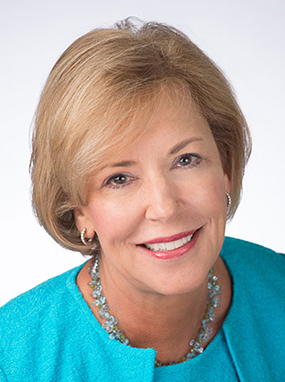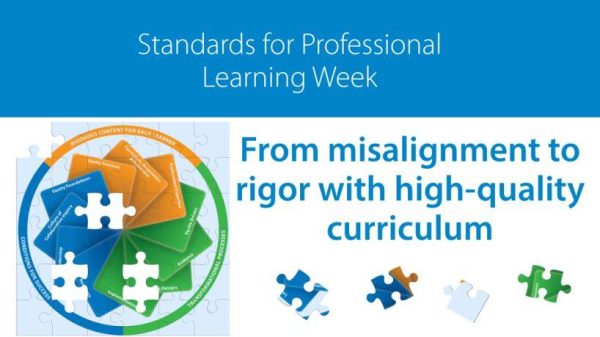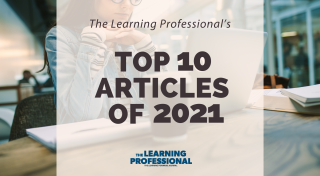Perhaps you’ve seen our recent blogs calling on professional learning communities (PLCs) to anchor their work in the deep study of their curriculum and instructional materials. At Learning Forward, we have always been explicit about the importance of focusing professional learning on the outcomes we expect for students and their teachers.
Now, a growing body of research shows that high-quality curricula in the hands of effective teachers have a positive impact on student learning. In the face of that compelling research, we believe that even more deliberate and intentional attention to a curriculum-driven agenda contributes to an aligned and coherent professional learning system.
The Standards for Professional Learning define the elements critical to professional learning that produces results for students and teachers. They are grounded in a theory of change that connects the elements to advances in educator knowledge and skills; changes in educator practice; and finally, improvements in student learning. Focusing the work of PLCs on curriculum and instructional materials leverages the very best of what the standards guide us to do.
Critical to implementing high-performing PLCs are the Learning Communities, Leadership, and Resources standards. Establishing an expectation that PLCs anchor school learning sets a foundation to ensure alignment, collective responsibility, and continuous improvement. Effective leadership at system, school, and team levels ensures that teams have the materials, schedule, and support they need to do the work that is most important.
The breadth of work that a PLC is able to undertake is correlated to the resources allocated it, the most important of which is time. If a PLC is given only an hour a week to convene, the depth of its collaborative study and problem solving is much more limited than that of a team provided the recommended three to four hours per week.
Given each unique setting, PLCs pull from curriculum units, scope and sequences, and lessons to understand and identify the outcomes that determine how success will be measured for each cycle of learning. A cycle of learning can be planned for a course of study (e.g. themes, units, lessons) or a period of time (e.g. semester, quarter, six weeks). These decisions are related to several factors, including the time the team will have to work together.
Throughout the cycle, the team is regularly grounding its work in the curriculum and instructional materials. The cycle begins with determining outcomes and examining data to determine the greatest needs and opportunities for achieving them. Data let the team know where their students are in relation to these outcomes. Team members look at educator and student data so they can better understand where students may struggle and where additional support will be needed.
Studying the curriculum and the data leads team members to answer the question: What are priorities for student and educator learning? Educators will return to the data throughout the cycle as they monitor and assess the impact of their decisions and practices on their students.
Following this process, PLC members write and enact a learning design that will enable them to answer their questions and achieve their learning goals. A learning design grounded in curriculum and instructional materials focuses learning on the content of materials, refinement of lessons and assessments to meet unique student contexts and needs, and rehearsal with any materials team members want to fine-tune before using with students.
This stage is followed by implementation of the refined lessons and teachers’ planned assessments. During this stage, PLC members find other ways to support the transfer of new learning into their classrooms. They may choose to observe others implement first, co-teach with a colleague, or invite a coach to provide feedback on their instruction.
As part of the cycle of learning, they begin monitoring and reflecting on their practice and its impact. They look for opportunities to improve as well as preserve what works well. They understand that this is a continuous improvement process. Someday, they will return to this unit. Having thorough notes so they can know what to do next time will be very important for maintaining momentum.
The Standards for Professional Learning can be similarly applied to other important changes and programs a state or school system is trying to undertake. They can be used as the foundation for initiating a statewide leadership academy or implementing a new behavior management program across a system or school.
Combining the long-standing research that undergirds the standards with the compelling research that is emerging about curriculum offers substantive guidance and opportunities to fulfill the promise of professional learning communities.
Watch for the release this week of the Learning Forward white paper High-Quality Curricula and Team-Based Professional Learning: A Perfect Partnership for Equity, which focuses on integrating professional learning and high-quality curriculum and instructional materials.
This post originally appeared in Learning Forward’s PD Watch.
About the author
Stephanie Hirsh is executive director of Learning Forward.








